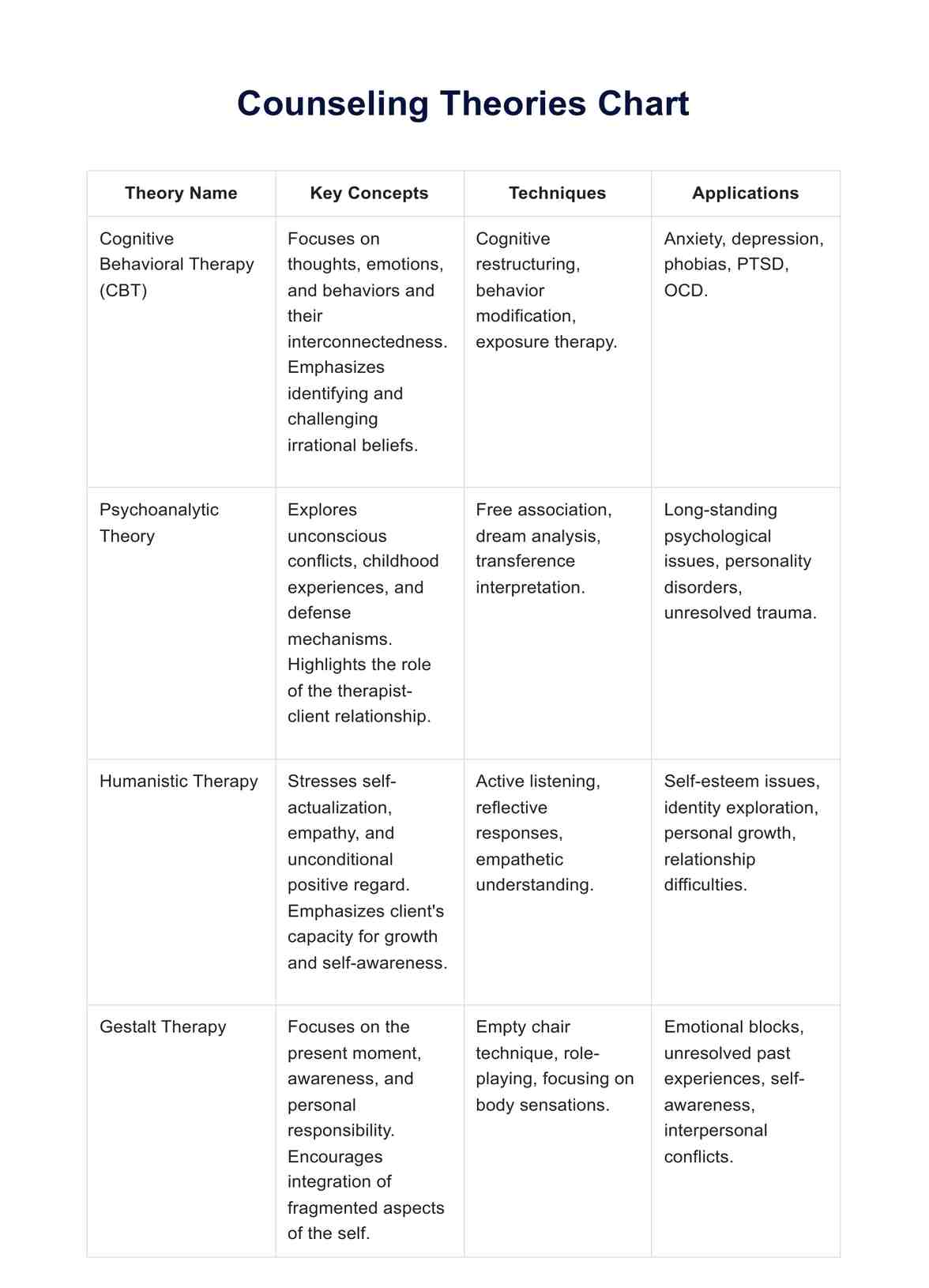Counseling theory is used to understand human behavior and guide therapeutic interventions in counseling practice.

Counseling Theories Chart
Refresh your memories on the counseling theories you can apply to your work by using our Counseling Theories Chart.
Use Template
Counseling Theories Chart Template
Commonly asked questions
Using theory in practice with clients can provide a structured framework for understanding their issues and selecting appropriate interventions, leading to more effective therapy outcomes.
Both theory and practice are essential in counseling, as theory informs practice and practice validates theory, creating a symbiotic relationship crucial for effective therapy.
EHR and practice management software
Get started for free
*No credit card required
Free
$0/usd
Unlimited clients
Telehealth
1GB of storage
Client portal text
Automated billing and online payments











